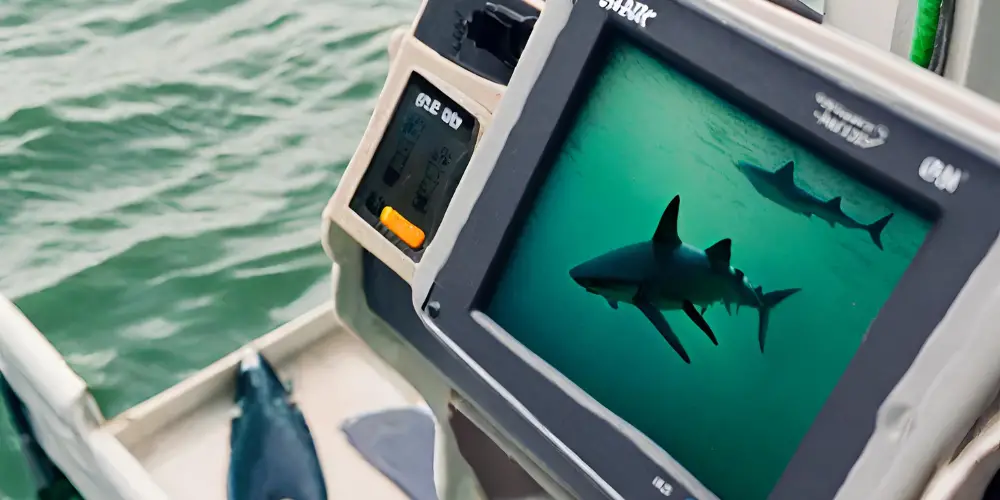Fish finders have revolutionized the way we approach fishing and marine exploration.
These compact pieces of technology offer a window into the underwater world that was once invisible to the naked eye.
A common question that piques the curiosity of many anglers and marine enthusiasts is: Do Sharks Show Up on Fish Finders?
Sharks can appear on fish finders as continuous solid or wavy lines, rather than the curved arches that indicate fish. This means fish finders can detect them, but their appearance differs from typical fish’s. Therefore, fish finders can be used to spot sharks and help reduce potential interactions while fishing.
In this comprehensive guide, we’ll explore the intricacies of fish finder technology, its capabilities, and whether these devices can pick up the presence of one of the ocean’s most formidable creatures – the shark.
Key Takeaways
- Sharks can appear on fish finders as continuous solid lines, different from the curved arches typical of other fish.
- Fish finders use sonar technology to interpret underwater environments, including the presence of sharks, visually.
- Different fish finders, such as CHIRP, Traditional Sonar, and Side-scan, offer various capabilities for detecting marine life.
- Sharks’ less buoyant nature due to the high oil content in their liver makes them less reflective of sonar, yet their size can cast a significant sonar shadow.
- Understanding sharks’ behavioral patterns like migration preferred depth, and activity can aid their detection using fish finders.
- Adjusting fish finder settings like sensitivity, frequency, and zoom can enhance the chances of detecting sharks.
- Advanced fish finders with features like Fish ID+ and Split-Frequency Displays can help differentiate between species, including sharks.
- Safety and conservation are crucial when detecting sharks, emphasizing awareness, regulations, and respectful practices.
- Fish finders can contribute to shark conservation efforts by aiding in non-invasive population studies and behavioral research.
- Technological advancements in fish finders are promising for more detailed and accurate detection of marine life, including sharks.
Understanding Fish Finders and Marine Life Detection
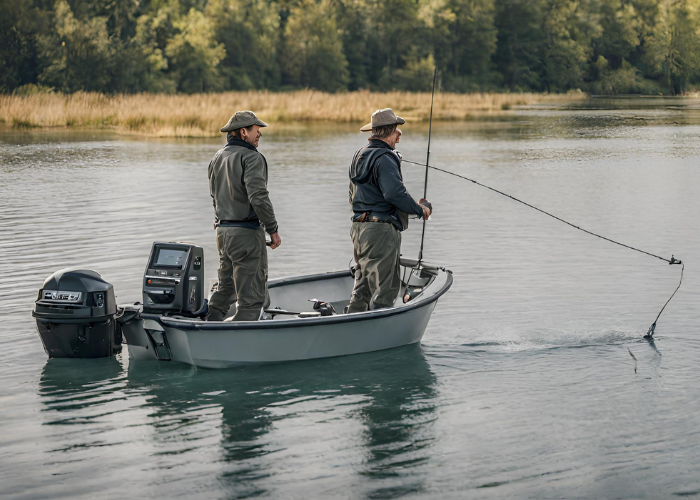
How Do Fish Finders Work?
Fish finders are not just fancy gadgets; they’re an amalgamation of physics and marine biology, packaged in a user-friendly device.
At its core is sonar technology—a sophisticated system that sends sound waves into the depths.
These waves bounce off objects like a bat’s echolocation and return to the device.
The fish finder interprets these echoes to represent the underwater environment visually.
Types of fish finders include:
- CHIRP (Compressed High-Intensity Radiated Pulse): This technology sends a continuous sweep of frequencies, offering a detailed and refined image of fish, structures, and the bottom.
- Traditional Sonar: Often uses a single frequency and is excellent for general fish finding and depth readings.
- Side-scan and Down-scan: These provide anglers with a photographic-like view, perfect for identifying structures and fish locations with these features.
Types of Signals and Interpretation
Interpreting the signals on a fish finder is an art in itself. To the trained eye, the display is a rich tapestry of information:
- Dense Dots: Signify a school of fish.
- Curved Arches: Indicate individual fish moving through the sonar beam.
- Continuous Solid Lines: This could suggest the presence of larger fish like sharks or the seabed.
The sonar interpretation depends on several factors:
- Fish Size: Larger fish reflect more sonar energy to the transducer.
- Swim Bladders: Fish with swim bladders, such as bass, reflect sonar well and appear prominently on the screen.
- Movement: Stationary objects differ in appearance from moving ones, affecting signal shape.
Limitations of Fish Finders in Detecting Marine Life
While fish finders are invaluable, they’re not omnipotent. Some limitations include:
- Depth: Deeper waters may require more powerful transducers to penetrate and return clear signals.
- Size: Smaller objects may not reflect enough sonar to be detected.
- Frequency: Lower frequencies are better for depth but may lack detail, while higher frequencies offer clarity but less depth penetration.
Can Fish Finders Detect Sharks?

Characteristics of Sharks on Sonar Screens
Sharks are the enigmas of the deep—silent, swift, and, thanks to their liver’s high oil content, less buoyant than fish with swim bladders.
These factors make them less reflective of sonar. However, their size can still cast a significant sonar shadow.
It appears as a continuous solid line on the fish finder, differentiated from the seabed or schools of smaller fish.
Understanding the Behavioral Patterns of Sharks
Sharks have distinct patterns and preferences that can aid in detection:
- Migration: Many species have predictable migration routes and times.
- Depth: Some sharks prefer shallower waters, while others lurk in the deep.
- Activity: Knowing when sharks are most active can increase the likelihood of detection.
Enhancing the Chances of Shark Detection
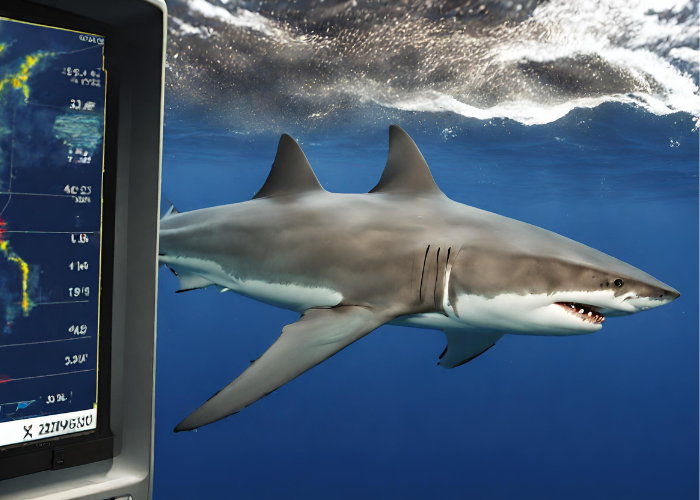
Optimal Settings for Detecting Larger Fish
To maximize the fish finder’s effectiveness in spotting sharks, consider these settings:
- Sensitivity: Increase the sensitivity to pick up fainter echoes from large, distant sharks.
- Frequency: Use a lower frequency to send out broader waves, potentially capturing the presence of large marine life.
- Zoom: Utilize the zoom function to focus on specific depths where sharks may swim.
Using Technology to Differentiate Between Species
Advanced fish finders come with sophisticated features to help determine what’s beneath the waves:
- Fish ID+: This feature uses algorithms to guess the fish type based on the sonar echo’s shape and return strength.
- Split-Frequency Displays: View multiple frequencies at once to understand better what’s below—larger objects might be sharks.
Practical Tips for Anglers and Marine Enthusiasts
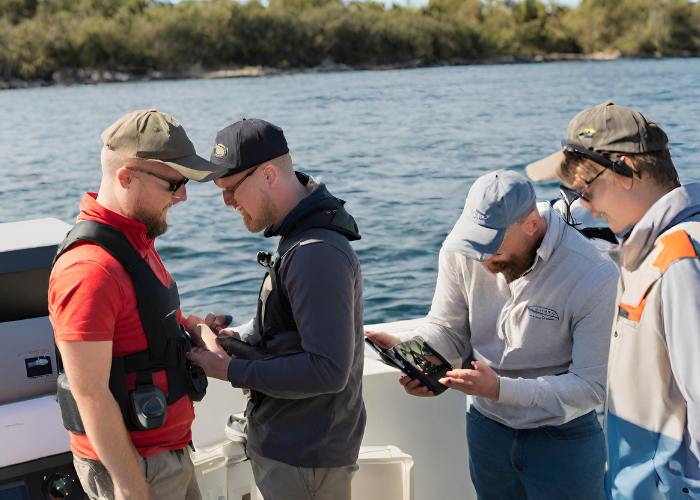
Safety Precautions When Detecting Sharks
When venturing into the habitat of these apex predators, safety is paramount:
- Awareness: Always be aware of your surroundings, especially if sharks are detected.
- Regulations: Familiarize yourself with local laws regarding shark fishing and conservation.
- Conservation: Practice catch-and-release and respect shark populations.
Real-Life Accounts of Shark Detection
Stories from the field often carry the most weight. Anglers around the world have shared tales of their encounters with sharks on fish finders, noting:
- Behavioral Patterns: Sharks often follow schools of baitfish, so detecting these can lead to shark detection.
- Environmental Factors: Sharks may be more easily detected in transparent waters without heavy silt or plant matter.
RELATED POST: Do Sharks Follow Cruise Ships?
The Future of Fish Finder Technology
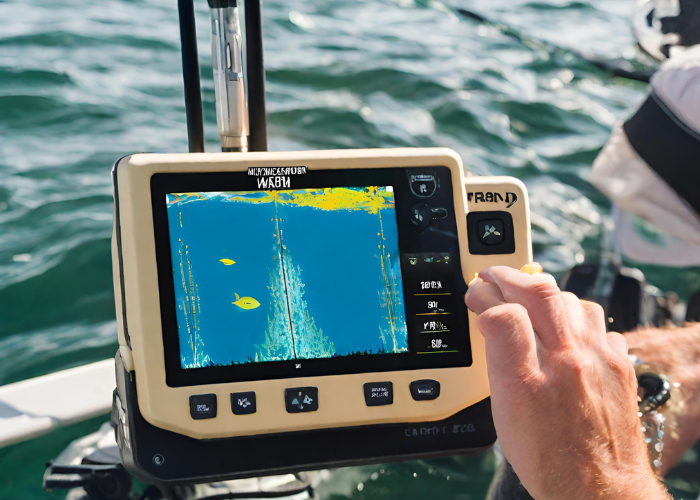
Innovations in Fish Finder Tech
The horizon for fish finder technology holds promise for even more significant discoveries:
- Integration with GPS and Mapping Software: Combining fish finders with mapping technology to track shark movement patterns over time.
- Increased Transducer Sensitivity: Future models may be able to detect even the slightest movement, perhaps even the stealthy swim of a shark.
Frequently Asked Questions (FAQs)

Do All Sharks Show Up on Fish Finders?
Not all sharks will show up on fish finders, and various factors contribute to this:
- Shark Species: Some species may be more detectable than others because of their size and swim depth.
- Fish Finder Technology: The sophistication of your fish finder can sway detection odds.
Can Fish Finders Help in Shark Conservation Efforts?
Fish finders can ally in conservation by providing non-invasive ways to monitor shark populations and behaviors. Data from fish finders can help in:
- Population Studies: Tracking the number and movement of sharks in an area.
- Behavioral Research: Understanding shark feeding and mating patterns without direct interference.
Conclusion

While fish finders are not shark finders per se, with the proper knowledge and settings, they can certainly aid in detecting these magnificent creatures.
As technology advances, our window into the underwater world grows clearer, offering thrilling angling adventures and invaluable insights for conservation.
Call to Action
Whether you’re an angler with a tale of the one that got away or a marine enthusiast with insights on fish finder tech, your stories enrich our community.
Share your experiences and join the conversation below. And don’t forget to subscribe for the latest updates from the world of fishing technology and marine life exploration.

